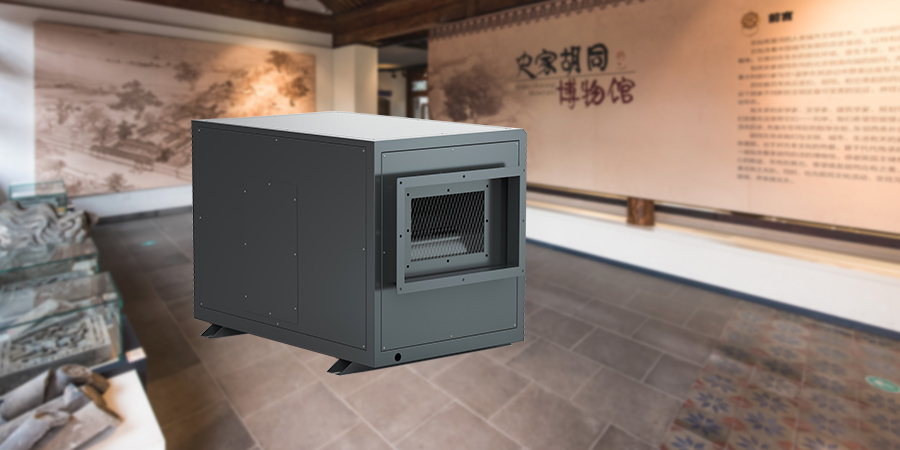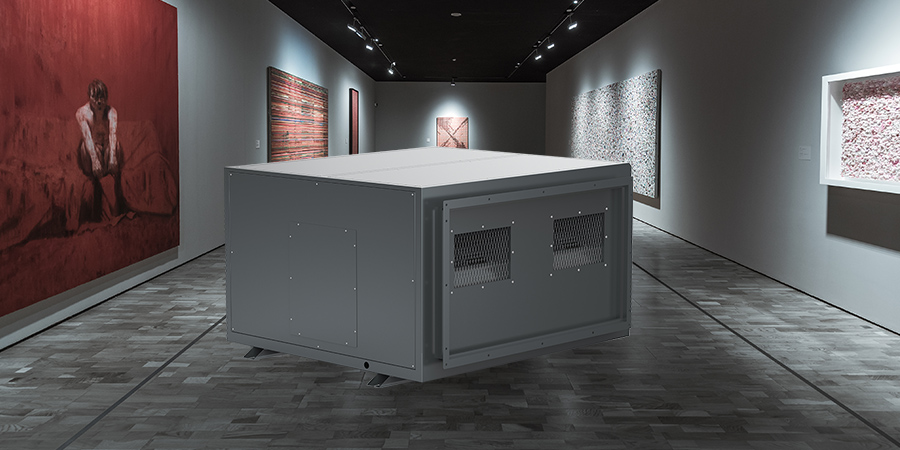


In the field of cultural heritage protection, humidity control has always been the first line of defense for safeguarding precious cultural relics.
Now, this highly advanced technology that was originally exclusive to museums is quietly entering ordinary people's homes, providing professional-level
humidity protection for family collections, art collections, and daily life. This article will take you on a journey to explore how ceiling dehumidifiers have
moved from museum display cases to household spaces, analyze their technical principles and innovative applications, and envision how this cross-border
technology will redefine modern home environment management.
From the Museum to the Living Room: The Popularization Revolution of Humidity Control Technology
Entering any professional museum, a temperature and humidity control system is an indispensable "invisible guardian". These institutions have astonishingly
strict requirements for the environment - the temperature must be constantly maintained at 20-24℃, and the relative humidity must be precisely controlled
within 50-60%, with a fluctuation range of no more than ±5%. Behind such precise environmental control lies a profound understanding of the fragile nature
of cultural relics: paper will crack due to excessive dryness and mold due to excessive humidity; metals accelerate oxidation in a high-humidity environment;
textiles and wooden items are even more sensitive "victims" to changes in humidity.
The consequences of uncontrolled humidity have been widely witnessed throughout history. According to historical records, some precious ancient books
suffered irreversible acidification and brittleness within just a few years due to fluctuations in the humidity of the storage rooms; the canvas behind famous
paintings would contract and expand with changes in humidity, causing the paint layers to crack and fall off. These painful lessons have spurred the rapid
development of museum-level humidity control technologies.
To our surprise, these once-valuable professional equipment, which cost hundreds of thousands of dollars, have now been reduced to a price range that is
acceptable for households through technological innovation and large-scale production. Especially the appearance of the suspended ceiling design has not
only retained professional-level performance but also perfectly integrated into the home environment. Modern home ceiling dehumidifiers have an astonishing
range of dehumidification capacity - from 20L per day suitable for small study rooms to 1200L per day capable of handling the entire basement floor, providing
precise solutions for different space needs.
The core of this technology's democratization lies in three major breakthroughs: The miniaturized compressor technology has significantly reduced the size of
the equipment; the decline in the cost of intelligent control systems has made precise humidity control no longer expensive; the modular design enables the
same platform to flexibly adapt to different requirements for dehumidification. As a result, ordinary households can now achieve the humidity control level
that was only available in museums ten years ago at a reasonable price.

The core technology of the ceiling dehumidifier: Uncompromising professional performance
The reason why the ceiling dehumidifier can stand out among numerous household dehumidification products is that it inherits the technical genes of
museum-level equipment. Unlike ordinary household dehumidifiers that only focus on "reducing humidity", professional-level equipment pursues precise
control of "stabilizing humidity at the set value". This requires higher technical and material standards.
In terms of humidity control accuracy, professional ceiling dehumidifiers demonstrate a crushing advantage. The humidity fluctuation range of ordinary
household products is usually ±10%RH, while professional models can reach an astonishing ±3%RH8. This accuracy is achieved through multiple sensor
arrays and fuzzy logic algorithms - the equipment not only monitors the current humidity but also predicts environmental change trends and adjusts
the operating status in advance. Some high-end models even introduce the "micro-positive pressure" control technology used in museum display cases,
maintaining a slight positive pressure inside the cabinet to isolate external air interference and further reduce fluctuations to ±1%RH8.
The intelligent interconnection feature further enhances the professional equipment. Through 485 interface or MODBUS protocol, the ceiling dehumidifier
can be connected to the home automation system to achieve remote monitoring and strategy adjustment. Users can not only view real-time environmental
data but also set humidity strategies at different times - for example, maintaining 55%RH during the day is suitable for human comfort, and adjusting to 50%RH
at night is more conducive to the preservation of collections.
Home application scenarios: Unimaginable humidity management
The protection of books and artworks is the most direct application field. Ancient books and precious paintings have the same environmental requirements
as museum collections - the relative humidity needs to be stable between 50% and 60%, and the temperature change should not exceed ±2℃. Ordinary
bookcases cannot provide such a stable environment, and whole-room dehumidification is too energy-consuming. The zone control capability of the ceiling
dehumidifier perfectly resolves this contradiction: it can maintain a humidity of 55%RH in the bookcase area, while keeping the living room at a comfortable
human-suitable humidity of 60%RH. A case study shows that after using professional humidity control, the acidification rate of ancient book paper has slowed
down by more than 70%, effectively extending the lifespan of the documents.
The demand for dressing rooms and luxury collections is often underestimated. Leather products tend to mold when the humidity exceeds 65%, and they will
crack if the humidity is below 45%. Natural fibers in high-end suits also require an appropriate level of humidity to maintain their shape. Some materials in
jewelry (such as pearls and coral) are even "barometers" for humidity changes. The precise control of ceiling dehumidifiers can keep the dressing room at
an ideal 50-55% RH, preventing mold while avoiding excessive dryness. Some models are specially designed with hose interfaces, allowing them to directly
supply air to the wardrobe, creating a local microclimate.
The basement's moisture prevention measures for the entire residence demonstrate the extensive processing capacity of the ceiling dehumidifier. Traditional
dehumidifiers often struggle when dealing with entire basements, while professional models with a dehumidification capacity of 1200L/day can handle it easily.
Through the duct system, one device can cover multiple rooms and uniformly manage the humidity of the entire house. The concept of "fully automatic
moisture-proof house" in Taiwan is based on this idea. It applies the original dehumidification technology used in museums to residential buildings,
effectively solving problems such as wall condensation and floor water seepage in high-humidity climates.

When choosing a ceiling dehumidifier suitable for a family, several technical parameters need to be considered:
Dehumidification capacity: Calculated based on the volume of the space and the degree of humidity, for a typical residence, a model with a capacity of
50-150L per day is recommended. For large basements, a capacity of 300L per day or more may be required.
Humidity control range: High-quality equipment should be able to continuously adjust within the range of 30%-70% RH, with an accuracy of ±3% RH.
Air volume: Determines the efficiency of air circulation. Generally, a volume of 10-15m³/h per square meter of space is required.
Filter system: At least it should include primary filtration + activated carbon filtration. For families with members with allergies, a model with HEPA filtration
is recommended.
Intelligent functions: Remote control, data recording, automated scene linkage and other value-added functions.
From the museum display cases that safeguard ancient relics to the ceiling equipment that ensures family health, humidity control technology has undergone a
transformation into a technology accessible to the general public. This process not only enables cutting-edge technology to truly serve daily life, but also
changes the standards of people's perception of home environments - humidity is no longer just a vague concept of "not being uncomfortable", but an
important living parameter that can be precisely managed.
With technological progress and the popularization of concepts, professional-level environmental control will become a standard feature of quality life,
and ceiling dehumidifiers are the best witnesses and drivers of this trend.